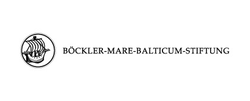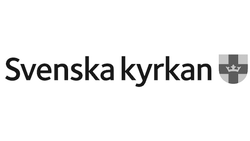Michel Sittow in the North? Altarpieces in Dialogue
The renowned Tallinn-born artist Michel Sittow (ca 1469–1525), who was active in royal courts of Europe during the Late Middle Ages, worked in his home town for more than fifteen years. In the courts of Southern and Northern Europe, he painted portraits of kings and high ranking noblemen; in Tallinn, he undertook commissions from the local merchants and the town council, as well as from churches of the Nordic countries. Coming from the multinational and multilingual Hanseatic town, the career of Michel Sittow, who had German and Finnish-Swedish roots, was extraordinary. At the turn of the 15th and 16th centuries, he was one of the most widely recognised portrait painters in Europe. However, he did not stay abroad, but returned to his home town and worked there as a master during two periods: in 1506–1514 and in the final years of his life, 1518–1525. In his native Baltic Sea area, his circle of commissioners extended from Livonia northwards: written sources note works for the Siuntio church in Finland, and, with high probability, the Holy Kinship Altarpiece in the Bollnäs church in northern Sweden can be attributed to Sittow.
This exhibition and the research project of the same title examine, for the first time, the activities and possible works of the Tallinn workshop of the renowned artist in dialogue with the other international masters operating in Tallinn during the same time period. The key works that reveal these themes are the Bollnäs Holy Kinship altarpiece and the Tallinn Passion altarpiece. The magnificent Holy Kinship Altarpiece is attributed to Michel Sittow’s workshop in Tallinn. At about the same time, Sittow also painted the outer wings of the Passion Altarpiece, created in the workshop of Early Netherlandish painters Adriaen Isenbrant’s or Albert Cornelis’ workshop in Bruges. The exhibition explores the stories and meanings behind the two artworks in a broader context, comparing them with other contemporary artworks from Tallinn and nearby regions. The focus is on Sittow’s work in his home town and the role of Tallinn as an artistic centre in the Late Middle Ages.
Gallery
The wish to address the topic of Michel Sittow’s Tallinn workshop raised the need to look at late medieval art production in Tallinn and place it in the broader context of the Baltic Sea area. Research on the works of art created in Tallinn and the masters working there has, until now, been hindered by the fact that only a few works associated with the names of particular masters active there have survived. By including works preserved in neighbouring areas, it is possible to construct a picture of late-medieval Tallinn as a blossoming centre of art, which is also partially confirmed by written sources. At a certain moment in time, highly skilled masters from different European centres were active in Tallinn. Michel Sittow worked with them in his native town. The works created by these masters or attributed to them are interconnected by similar styles and manners of expression found nowhere else in the Baltic Sea area at that particular time. The key work of the exhibition is the Bollnäs Holy Kinship altarpiece, where the paintings on the outer wings of the Tallinn Passion altarpiece and the figures of the cenotaph of Hans Pawels on the eastern wall of the St Mary’s Chapel in St Olaf ’s Church stylistically come together. The life-size stone sculptures of the Wolter von Plettenberg, the Master of the Livonian branch of the Teutonic Order and the Virgin Mary can also be attributed to the same masters. The occasion to present in an exhibition the works of art like the Bollnäs altarpiece and the life-size figure of Plettenberg is exceptional. Such rare and large-scale works of art rarely travel, and their arrival in their presumed ‘birthplace’ is a very special event.
This exhibition, which presents works from the collections of Estonia, Sweden, Finland and Latvia offers a glimpse at Tallinn as a unique art centre open to innovations, which seemed destined to rise like a shining star into the northern skies under continually favourable conditions, but which faded away in the course of religious and political changes and the consequences of wars.
Gallery
Gallery
Exhibition team
Chief curator of the exhibition: Merike Kurisoo (Art Museum of Estonia)
Curators: Greta Koppel (Art Museum of Estonia), Lars Nylander (Hälsingland Museum), Jan Friedrich Richter (Berlin State Museums)
Exhibition design: Liis Lindvere, Villu Plink
Graphic design: Tuuli Aule
Co-operation partners
Art Museum of Estonia, Hälsingland Museum, The Church of Sweden
We thank the lenders:
Bollnäs Congregation, The Church of Sweden, The National Museum of Finland, The National History Museum of Latvia, Tallinn City Museum,
Tallinn Culture & Sports Department, EELC Tallinn Holy Spirit Congregation
Supporter of the exhibition and catalogue:
Nordisk Kulturfond


























